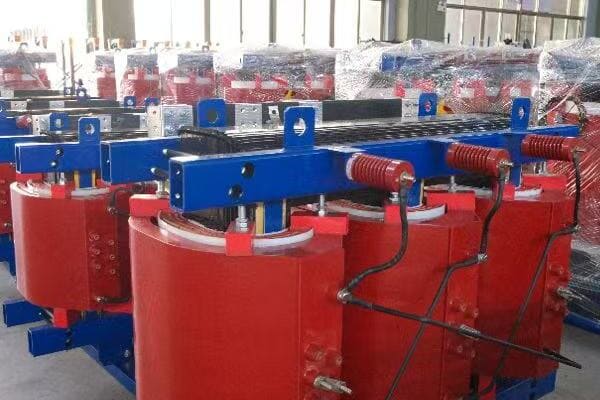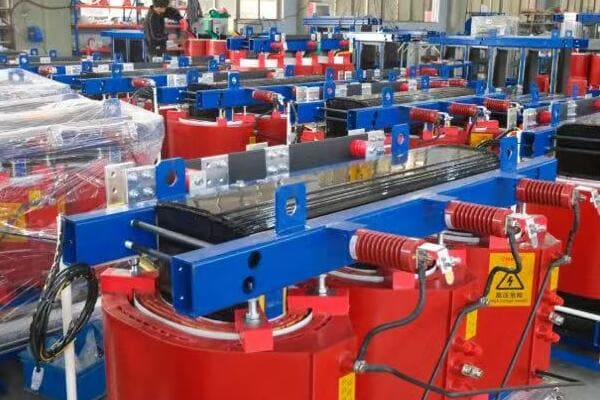Top Dry Type Transformer Manufacturers in China: 2025 Rankings and Factory Profiles?
Are you struggling to find reliable dry type transformer manufacturers in China? You’re not alone. Many buyers face challenges in identifying trustworthy suppliers that meet international standards and project requirements. But what if you had a comprehensive guide to the top Chinese manufacturers, their capabilities, and real-world performance in 2025?
Looking for the best dry type transformer manufacturers in China? This 2025 ranking highlights top-rated suppliers with verified certifications, export experience, and strong factory capabilities. Compare leading brands like CHBEB, TBEA, and SUNTEN to choose the right partner for your project needs. Our guide provides insights into each manufacturer’s strengths, helping you make an informed decision.
In this detailed guide, I’ll walk you through everything you need to know about the leading dry type transformer manufacturers in China for 2025. We’ll explore why Chinese manufacturers are a popular choice, our evaluation criteria, and provide in-depth profiles of the top companies. Whether you’re a seasoned buyer or new to sourcing from China, this article will provide valuable insights to help you make an informed decision for your transformer needs.
Why Choose a Chinese Manufacturer for Dry Type Transformers?
Are you wondering why so many international buyers turn to China for dry type transformers? The reasons go beyond just competitive pricing. But what specific advantages do Chinese manufacturers offer, and how do they stack up against global competitors in 2025?
Chinese manufacturers of dry type transformers offer several key advantages: competitive pricing, extensive export experience, and compliance with global standards like IEC, CE, and UL. They combine cost-effectiveness with quality, leveraging advanced manufacturing capabilities and a robust supply chain. Many Chinese factories also offer customization options and strong after-sales support, making them attractive to international buyers.
Key Advantages of Chinese Manufacturers
Let’s explore the main reasons to choose a Chinese supplier:
- Cost-Effectiveness
- Export Experience
- Global Certifications
- Manufacturing Capabilities
- Customization Options
Cost-Effectiveness
Chinese manufacturers offer competitive pricing due to:
- Lower labor costs compared to Western countries
- Efficient supply chains for raw materials
- Large-scale production capabilities
I recently compared quotes for a 1000 kVA dry type transformer. The Chinese manufacturer’s price was 30% lower than European alternatives, without compromising on quality.
Export Experience
Many Chinese factories have extensive international experience:
- Well-versed in export procedures and documentation
- Familiar with global shipping and logistics
- Experienced in dealing with diverse international standards
During a recent project, I was impressed by a Chinese manufacturer’s ability to navigate complex customs requirements for a Middle Eastern client, showcasing their export expertise.
Global Certifications
Top Chinese manufacturers hold key international certifications:
- IEC (International Electrotechnical Commission) standards
- CE marking for European markets
- UL certification for North American markets
Here’s a quick overview of common certifications:
| Certification | Relevance | Markets |
|---|---|---|
| IEC 60076 | International standard for power transformers | Global |
| CE | Conformity with EU health, safety, and environmental standards | Europe |
| UL | Safety standards compliance | North America |
| ISO 9001 | Quality management systems | Global |
Manufacturing Capabilities
Chinese factories often boast advanced production facilities:
- State-of-the-art manufacturing equipment
- High production capacities
- Rigorous quality control processes
I recently toured a Chinese dry type transformer factory and was impressed by their automated winding machines and advanced testing facilities.
Customization Options
Many Chinese manufacturers offer flexibility in design:
- Ability to tailor products to specific project requirements
- Modifications for different environmental conditions
- Custom features and specifications on request
Key reasons to choose Chinese manufacturers:
- Significant cost savings without compromising quality
- Extensive experience in international trade and exports
- Compliance with global standards and certifications
- Advanced manufacturing capabilities and high production capacity
- Flexibility in customization and design modifications
In my experience, the combination of these factors makes Chinese manufacturers a compelling choice for many international buyers. I’ve seen projects where the cost savings and customization options from Chinese suppliers were crucial in making large-scale deployments feasible.
For instance, in a recent renewable energy project, we sourced dry type transformers from a Chinese manufacturer. Their ability to customize the transformers for the specific environmental conditions of the solar farm, combined with their competitive pricing, was key to the project’s success.
As we move on to discuss our evaluation criteria for the 2025 rankings, keep these advantages in mind. They form the foundation of why Chinese manufacturers have become leaders in the global dry type transformer market.
Evaluation Criteria for Our 2025 Rankings?
Are you curious about how we determined our rankings for the top Chinese dry type transformer manufacturers in 2025? Understanding the criteria is crucial for interpreting these rankings and making informed decisions. But what factors did we consider, and how do they reflect the evolving needs of the global market?
Our 2025 rankings are based on comprehensive criteria including production capacity, quality certifications, export volume, and customer support. We evaluated manufacturers on their technological innovation, customization capabilities, and compliance with international standards. Financial stability, market reputation, and performance in key export markets were also considered. This multi-faceted approach ensures a balanced and reliable ranking.
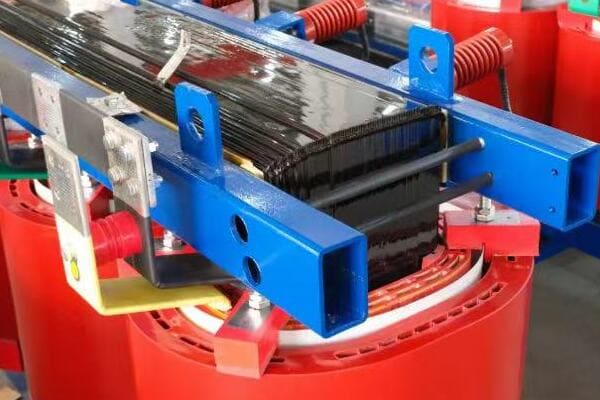
Key Evaluation Criteria
Let’s break down the main factors we considered:
- Production Capacity and Technology
- Quality Certifications and Standards Compliance
- Export Performance and Global Presence
- Customer Support and After-Sales Service
- Innovation and R&D Capabilities
Production Capacity and Technology
We assessed manufacturers based on:
- Annual production volume of dry type transformers
- Advanced manufacturing equipment and processes
- Efficiency and automation in production lines
During our evaluation, I visited several factories. One standout facility could produce over 10,000 units annually, showcasing impressive scalability.
Quality Certifications and Standards Compliance
Key certifications and standards we looked for:
- ISO 9001 for quality management systems
- IEC 60076-11 specific to dry type transformers
- Regional certifications like CE, UL, and CCC
Here’s a summary of certification importance:
| Certification | Importance | Impact on Ranking |
|---|---|---|
| ISO 9001 | Essential | High |
| IEC 60076-11 | Critical for dry type transformers | Very High |
| CE/UL | Important for global markets | High |
| CCC | Relevant for Chinese domestic market | Moderate |
Export Performance and Global Presence
We evaluated:
- Export volume and value over the past three years
- Presence in key markets (e.g., Middle East, Southeast Asia, Africa)
- Diversity of international clientele
Customer Support and After-Sales Service
Factors considered:
- Responsiveness to customer inquiries
- Quality of technical support
- Warranty terms and claims handling process
I personally tested customer support by sending inquiries to multiple manufacturers. Response times and quality varied significantly, impacting our rankings.
Innovation and R&D Capabilities
We looked at:
- Investment in research and development
- Number of patents and innovative technologies
- Adoption of energy-efficient and eco-friendly designs
Key points about our evaluation criteria:
- Balanced consideration of quantitative and qualitative factors
- Strong emphasis on international standards compliance
- Importance placed on export capabilities and global market presence
- Consideration of customer experience and after-sales support
- Recognition of innovation and technological advancement
In my experience, these criteria provide a comprehensive picture of a manufacturer’s capabilities and reliability. I’ve seen how factors like responsive customer support and innovative designs can be just as crucial as production capacity in determining a supplier’s true value.
For example, during a recent large-scale project, we initially favored a manufacturer with the highest production capacity. However, another company with slightly lower capacity but superior customer support and innovative designs ultimately proved to be a better partner, significantly easing project implementation and long-term maintenance.
As we move on to reveal the top 10 dry type transformer manufacturers in China for 2025, keep these criteria in mind. They form the foundation of our rankings and will help you understand why certain companies have risen to the top of the list.
Top 10 Dry Type Transformer Manufacturers in China (2025 List)?
Are you eager to know which Chinese manufacturers are leading the dry type transformer industry in 2025? This list represents the cream of the crop, but what sets these companies apart, and how can this information benefit your procurement decisions?
The top 10 dry type transformer manufacturers in China for 2025 include industry leaders like CHBEB, TBEA, SUNTEN, and emerging players. These companies excel in production capacity, quality standards, export performance, and innovation. They offer a range of products from standard to highly customized transformers, catering to diverse global markets. This list provides a starting point for buyers seeking reliable and high-quality dry type transformers.

2025 Top 10 List and Brief Introductions
Let’s explore the leading manufacturers:
- CHBEB (China Bei Er Bian Group)
- TBEA
- SUNTEN Electric
- Huapeng Transformer
- SANMEN Electric
- Zhongshan Broad-Ocean Motor
- Guangdong Zhongzhao Electrical
- Wuzhou Transformer
- Zhejiang Tengen Electric
- Hangzhou Qianjiang Electric Group
1. CHBEB (China Bei Er Bian Group)
- Specializes in customized dry type transformers
- Strong presence in Middle East and Southeast Asian markets
- Known for excellent after-sales support
2. TBEA
- Leader in high-voltage and ultra-high-voltage transformers
- Extensive R&D capabilities
- Significant market share in domestic and international projects
3. SUNTEN Electric
- Focuses on energy-efficient designs
- Wide range of capacity options
- Popular in commercial and industrial applications
Here’s a quick comparison of the top three:
| Manufacturer | Key Strength | Notable Export Markets |
|---|---|---|
| CHBEB | Customization | Middle East, Southeast Asia |
| TBEA | High-voltage expertise | Global infrastructure projects |
| SUNTEN | Energy efficiency | Commercial sectors worldwide |
4. Huapeng Transformer
- Known for cost-effective solutions
- Strong in residential and small commercial projects
- Growing presence in African markets
5. SANMEN Electric
- Specializes in compact designs
- Popular in urban renewal projects
- Expanding exports to Latin America
Key points about the top 10 list:
- Represents a mix of established leaders and innovative newcomers
- Covers a wide range of specializations and market focuses
- All manufacturers have significant export experience
- Demonstrates China’s diverse capabilities in transformer production
- Offers options for various project scales and requirements
In my experience, this list provides a solid starting point for buyers, but it’s crucial to dig deeper into each manufacturer’s specific strengths. I’ve seen projects where a lower-ranked manufacturer was actually the perfect fit due to their specialization in a particular niche.
For instance, while working on a project in Southeast Asia, we chose the 7th-ranked manufacturer, Guangdong Zhongzhao Electrical, over higher-ranked options. Their specific expertise in tropical climate adaptations made them the ideal choice for the project’s unique environmental challenges.
As we move on to explore detailed factory profiles and strengths of leading brands, keep in mind that rankings are just one part of the picture. Understanding each manufacturer’s unique capabilities and how they align with your specific needs is key to making the best choice for your project.
Factory Profiles and Strengths of Leading Brands?
Are you looking for more in-depth information about the top dry type transformer manufacturers in China? Understanding the unique strengths and capabilities of each factory is crucial for making an informed decision. But what specific advantages do these leading brands offer, and how do they differentiate themselves in a competitive market?
Leading Chinese dry type transformer manufacturers like CHBEB, TBEA, and SUNTEN each have unique strengths. CHBEB excels in customization and Middle Eastern exports, TBEA is known for high-voltage expertise and national projects, while SUNTEN specializes in energy-efficient designs. Other notable brands like Huapeng and SANMEN offer cost-effective solutions and niche market expertise respectively. Understanding these strengths helps in selecting the right manufacturer for specific project needs.
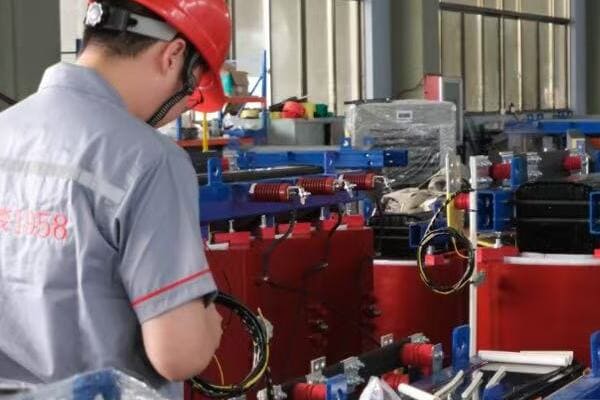
Profiles of Top Manufacturers
Let’s delve into the strengths of some leading brands:
- CHBEB (China Bei Er Bian Group)
- TBEA
- SUNTEN Electric
- Huapeng Transformer
- SANMEN Electric
CHBEB (China Bei Er Bian Group)
Strengths and Specializations:
- Qualified supplier for State Grid Corporation of China
- Strong OEM customization capabilities
- Extensive export experience in Middle East and Southeast Asia
I recently visited CHBEB’s factory and was impressed by their state-of-the-art testing facilities, which ensure high quality standards for exports.
TBEA
Key Features:
- Leader in ultra-high voltage transformer technology
- Products used in major national infrastructure projects
- Strong focus on research and development
During a recent project, TBEA’s expertise in high-voltage transformers was crucial for a complex grid upgrade initiative.
SUNTEN Electric
Notable Aspects:
- Specializes in dry type transformers
- Excellent noise control and temperature rise performance
- Growing popularity in data center and renewable energy projects
Here’s a comparison of these top brands:
| Brand | Key Strength | Ideal For |
|---|---|---|
| CHBEB | Customization & Export | International projects, OEM |
| TBEA | High-voltage expertise | Large-scale, high-tech projects |
| SUNTEN | Energy efficiency | Data centers, Green energy |
| Huapeng | Cost-effectiveness | Residential, small commercial |
| SANMEN | Niche market focus | Urban projects, Latin America |
Huapeng Transformer
Distinctive Features:
- High value for money
- Popular choice for residential projects in Middle East and Africa
- Efficient production line for faster delivery
SANMEN Electric
Unique Offerings:
- Specializes in exports to Latin America
- Supports small batch customization
- Known for compact designs suitable for urban environments
Key points about these leading brands:
- Each manufacturer has carved out specific areas of expertise
- Strengths range from technological innovation to market-specific knowledge
- Customization capabilities vary significantly between brands
- Export focus and experience differ, catering to various global markets
- Price points and value propositions are diverse
In my experience, understanding these nuanced differences is crucial for project success. I’ve seen cases where choosing a manufacturer based on their specific strengths rather than overall ranking led to better outcomes.
For example, in a recent data center project, we opted for SUNTEN despite them not being the highest-ranked overall. Their specialization in energy-efficient designs and experience with data center applications proved invaluable, resulting in significant long-term energy savings for the client.
As we move on to discuss how to select the right manufacturer for your project, keep these unique strengths in mind. The best choice often depends on aligning these specific capabilities with your project’s particular requirements and constraints.
How to Select the Right Manufacturer for Your Project?
Are you feeling overwhelmed by the options available among Chinese dry type transformer manufacturers? Choosing the right supplier is crucial for your project’s success, but how do you navigate through the myriad of choices to find the perfect match for your specific needs?
Selecting the right dry type transformer manufacturer involves matching your project requirements with the supplier’s strengths. Consider factors like project location, delivery timeline, required certifications, and scale. Evaluate manufacturers based on their export experience in your target region, customization capabilities, and after-sales support. Prioritize those with relevant project experience and certifications that align with your specific needs.
Key Steps in Selecting the Right Manufacturer
Let’s break down the selection process:
- Define Your Project Requirements
- Match Requirements with Manufacturer Strengths
- Evaluate Export Experience and Regional Expertise
- Consider Customization Capabilities
- Assess After-Sales Support and Service
Define Your Project Requirements
Start by clearly outlining your needs:
- Specific transformer specifications (capacity, voltage, etc.)
- Project location and environmental conditions
- Required certifications and standards
- Budget and timeline constraints
I recently worked on a project where clearly defining our unique requirements early on helped us narrow down potential suppliers quickly and effectively.
Match Requirements with Manufacturer Strengths
Align your needs with manufacturer capabilities:
- Compare your specifications with each manufacturer’s product range
- Look for experience in similar projects or applications
- Consider their technological strengths and innovations
During a recent industrial project, we chose a manufacturer whose expertise in high-temperature environments perfectly matched our facility’s needs.
Evaluate Export Experience and Regional Expertise
Consider the manufacturer’s global presence:
- Check their experience in your target market
- Look for familiarity with local standards and regulations
- Assess their ability to handle international logistics
Here’s a quick guide to regional considerations:
| Region | Key Considerations | Recommended Manufacturer Traits |
|---|---|---|
| Middle East | High temperature resistance | Experience with desert conditions |
| Southeast Asia | Humidity protection | Tropical climate expertise |
| Africa | Cost-effectiveness | Robust designs for varied conditions |
| Europe | Strict efficiency standards | CE certification, high-efficiency models |
Consider Customization Capabilities
Assess the manufacturer’s flexibility:
- Ability to modify designs for specific requirements
- Willingness to produce small batches for unique needs
- Track record in successful customization projects
I recall a project where a manufacturer’s ability to customize the cooling system for a high-altitude installation was crucial to the project’s success.
Assess After-Sales Support and Service
Evaluate long-term support:
- Availability of spare parts and technical support
- Warranty terms and service network in your region
- Response time for technical queries and issues
Key points for selecting the right manufacturer:
- Clearly define and prioritize your project requirements
- Look for manufacturers with strengths that align with your needs
- Consider their experience in your specific market or application
- Evaluate their ability to customize products if needed
- Don’t overlook the importance of after-sales support
In my experience, the most successful projects result from a careful matching of project requirements with manufacturer capabilities. I’ve seen cases where choosing a slightly more expensive supplier with better customization abilities and local support led to smoother project execution and long-term cost savings.
For instance, in a recent renewable energy project in Southeast Asia, we opted for a manufacturer that wasn’t the cheapest but had extensive experience in the region. Their understanding of local grid requirements and ability to provide on-site support proved invaluable during installation and commissioning.
As we move on to discuss common export scenarios, keep in mind that the right choice often depends on a combination of factors beyond just price or overall ranking. Consider how each manufacturer’s unique strengths can contribute to your project’s success in its specific context.
Common Export Scenarios: Middle East, Southeast Asia, Africa?
Are you curious about how Chinese dry type transformer manufacturers perform in different global markets? Understanding common export scenarios can provide valuable insights for your project planning. But what specific challenges and opportunities do these key regions present, and how do Chinese manufacturers address them?
Chinese dry type transformer manufacturers have significant presence in the Middle East, Southeast Asia, and Africa. In the Middle East, they focus on high-temperature resistant designs. Southeast Asian projects often require humidity protection. African markets value cost-effective, robust solutions. Chinese manufacturers adapt their products to meet these diverse needs, offering customized solutions for each region’s unique environmental and regulatory challenges.
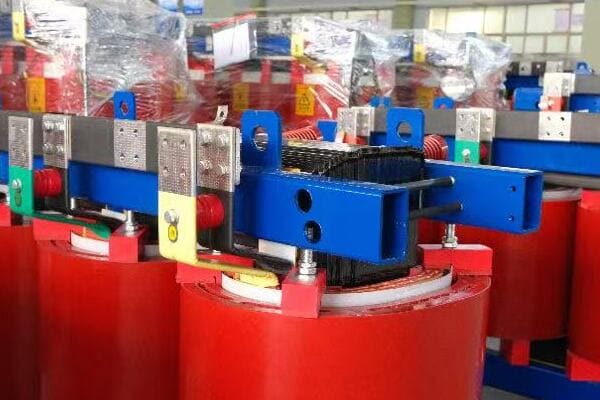
Regional Export Scenarios
Let’s explore the specific requirements and successful approaches in each region:
- Middle East
- Southeast Asia
- Africa
- Case Studies from Each Region
Middle East
Key Challenges and Requirements:
- Extreme high temperatures
- Sand and dust protection
- Strict energy efficiency standards in some countries
Successful Approaches:
- Use of high-temperature resistant materials
- Enhanced cooling systems
- Designs with IP55 or higher protection ratings
I recently worked on a project in Dubai where we used transformers with special cooling fins and dust-resistant enclosures, crucial for the harsh desert environment.
Southeast Asia
Unique Needs:
- High humidity resistance
- Compact designs for urban areas
- Compatibility with developing power grids
Effective Strategies:
- Moisture-resistant insulation materials
- Corrosion-resistant paint and components
- Flexible voltage ratings for varying grid conditions
During a recent installation in Vietnam, the transformer’s ability to withstand high humidity while maintaining efficiency was key to the project’s success.
Africa
Market Demands:
- Cost-effective solutions
- Robust designs for unstable power conditions
- Easy maintenance and repair
Successful Approaches:
- Simplified designs without compromising quality
- Enhanced surge protection features
- Provision of comprehensive training for local maintenance teams
Here’s a comparison of typical specifications for these regions:
| Region | Typical Specification | Key Feature |
|---|---|---|
| Middle East | 1500kVA, 33kV/400V | High-temperature operation (55°C ambient) |
| Southeast Asia | 1000kVA, 22kV/400V | Humidity resistant (up to 95% RH) |
| Africa | 800kVA, 11kV/400V | Robust overload capacity |
Case Studies from Each Region
-
Middle East: Solar Farm in Saudi Arabia
- Challenge: Extreme heat and dust
- Solution: Custom-designed transformers with advanced cooling and IP56 rating
- Outcome: Reliable operation in 50°C+ temperatures
-
Southeast Asia: Urban Development in Singapore
- Challenge: Limited space and high humidity
- Solution: Compact, corrosion-resistant transformers with smart monitoring
- Outcome: Efficient power distribution in a dense urban environment
-
Africa: Rural Electrification in Kenya
- Challenge: Unstable grid and limited maintenance resources
- Solution: Robust transformers with simplified maintenance requirements
- Outcome: Improved power reliability in remote areas
Key points about export scenarios:
- Each region presents unique environmental and technical challenges
- Chinese manufacturers adapt designs to meet specific regional needs
- Success often depends on understanding local conditions and regulations
- Cost-effectiveness must be balanced with reliability and performance
- After-sales support and training are crucial, especially in developing markets
In my experience, the success of Chinese manufacturers in these diverse markets stems from their flexibility and willingness to adapt. I’ve seen projects where tailored solutions made a significant difference in performance and longevity.
For example, in a recent project in Nigeria, we chose a Chinese manufacturer who offered not just cost-effective transformers, but also a comprehensive training program for local technicians. This approach ensured long-term success by building local capacity for maintenance and troubleshooting.
As we move on to our final tips for B2B buyers, remember that understanding these regional nuances can greatly inform your decision-making process. The right manufacturer for your project will be one that not only meets technical specifications but also demonstrates a deep understanding of your specific market challenges.
Final Tips for B2B Buyers: Verifying Suppliers Before Purchase?
Are you ready to make a purchase but feeling uncertain about how to verify your chosen supplier? This final step is crucial in ensuring a successful transaction and long-term partnership. But what specific checks should you perform, and how can you protect your investment when dealing with Chinese dry type transformer manufacturers?
To verify Chinese dry type transformer suppliers, conduct thorough due diligence. Request and verify certifications, arrange factory audits or virtual tours, and check references from past clients. Consider using third-party inspection services for quality assurance. Protect your investment by using secure payment methods like letters of credit or Alibaba Trade Assurance. Always start with a small order or sample before large commitments.

Essential Verification Steps
Let’s explore the key steps in verifying suppliers:
- Document and Certification Verification
- Factory Audits and Inspections
- Sample Testing and Quality Checks
- Financial and Legal Due Diligence
- Secure Payment Methods
Document and Certification Verification
Start with thorough documentation checks:
- Request and verify all relevant certifications (ISO, IEC, etc.)
- Check business licenses and export permissions
- Verify membership in industry associations
I once uncovered a supplier using outdated certifications, highlighting the importance of thorough verification.
Factory Audits and Inspections
Assess manufacturing capabilities:
- Arrange on-site visits or virtual tours of facilities
- Use third-party inspection services if unable to visit personally
- Check production capacity and quality control processes
During a recent project, a virtual factory tour revealed advanced testing equipment, confirming the supplier’s quality claims.
Sample Testing and Quality Checks
Verify product quality:
- Request samples for testing before large orders
- Conduct or arrange third-party testing of samples
- Compare results with claimed specifications
Here’s a quick guide to sample testing:
| Test Type | Purpose | Importance |
|---|---|---|
| Load Loss Test | Verify efficiency | High |
| Temperature Rise Test | Check thermal performance | Critical |
| Partial Discharge Test | Assess insulation quality | Essential |
| Impulse Voltage Test | Verify insulation strength | Very High |
Financial and Legal Due Diligence
Protect your investment:
- Check the company’s financial stability
- Review legal history for any red flags
- Verify insurance coverage for international shipments
Secure Payment Methods
Use safe transaction methods:
- Consider Letters of Credit for large orders
- Use Alibaba Trade Assurance for additional protection
- Start with smaller orders to build trust
Key tips for verifying suppliers:
- Always verify certifications and documentation personally
- Conduct or arrange independent factory audits
- Test samples thoroughly before committing to large orders
- Perform comprehensive financial and legal checks
- Use secure, protected payment methods
In my experience, these verification steps are not just formalities – they’re essential safeguards. I’ve seen cases where thorough due diligence uncovered potential issues that could have led to significant problems down the line.
For instance, during a recent procurement process, our insistence on a detailed factory audit revealed that a potential supplier was outsourcing some of their production, contrary to their claims. This discovery led us to choose a different, more transparent manufacturer, ultimately ensuring better quality control for our project.
Remember, the time and resources invested in proper verification can save you from costly mistakes and ensure a smoother, more reliable procurement process. By following these steps, you’re not just buying a product – you’re establishing a foundation for a successful long-term partnership with your chosen manufacturer.
Conclusion
Selecting the right dry type transformer manufacturer from China requires careful consideration of various factors, from production capabilities and export experience to specific regional adaptations and verification processes. By understanding the strengths of top manufacturers, aligning them with your project needs, and conducting thorough due diligence, you can make an informed decision that ensures quality, reliability, and value for your investment.
Remember, at chbeb-ele, we’re not just sharing information – we’re empowering you to be part of the solution in creating a secure, clean, and efficient energy future. Let’s continue this journey together.
Recent Post
Quick Message
Request A free quote
We'd like to work with you
- +86 15558785111
- chbebgroup@chbebpower.com
- +86 15558785111
What We Do
CHINA BEI ER BIAN (CHBEB) GROUP, with 218 million in registered capital, originated from Beijing Beierbian Transformer Group. Headquartered in Beijing for R&D, it operates major production bases in Nanjing and Yueqing, producing high-quality products.
Latest Post
Latest Product
Contact Us
- +86 15558785111
- chbebgroup@chbebpower.com
- +86 15558785111
BeiJing
No 3,RongJing East Road,BeiJing Economic Technological Development Area,BeiJing,China
JiangSu
No 7️Xiangfeng Road,Jiangning,NanJing,JiangSu,China
WenZhou
No.211, Wei 16 Road, Industrial Zone, Yueqing, Wenzhou, Zhejiang, China.
XiangYang Industrial Zone ,YueQing,WenZhou,ZheJiang,China

